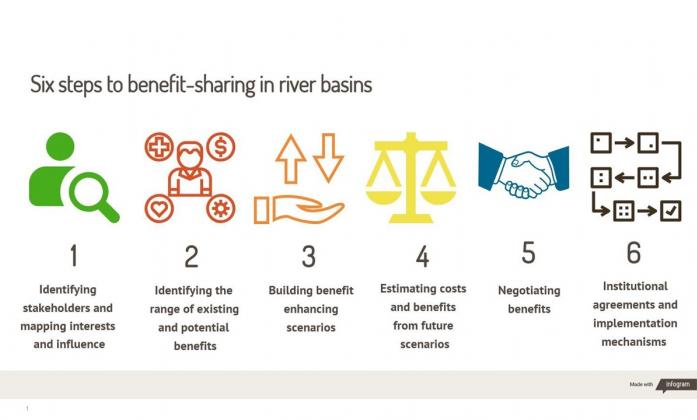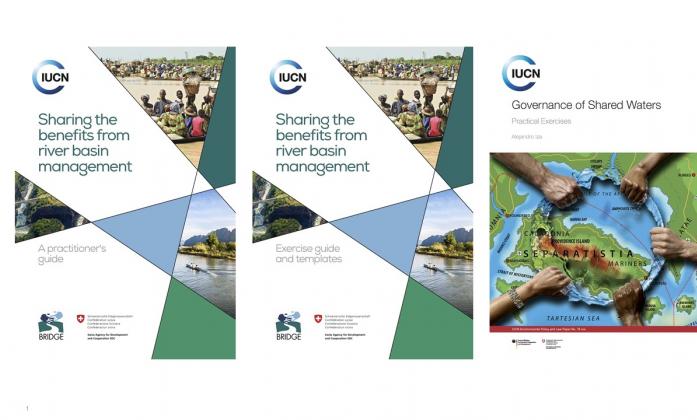Worldwide, water resources are shared between different stakeholders for multiple uses. With water resources becoming scarcer yet users increasing, management of shared water resources can be challenging. Stakeholders in water use and extraction often represent varied interests, drawn from different sectors and levels from local to national to regional scales in the riparian countries.
Through the BRIDGE programme, IUCN has been working towards promoting benefit sharing in river basins for over ten years.
The concept of benefit sharing represents an alternative approach to the conventional way of negotiation. Operationalising benefit sharing goes beyond negotiating water volumes allocated to different needs. It opens up dialogue to appreciate the range of benefits available in a river basin and how these can be distributed and shared amongst stakeholders.
To help make the concept of benefit sharing for river basin management more practical, IUCN developed a practitioner's guide with six steps which function as a roadmap and can be applied in basins at different stages of development. This guide is meant to build capacity of stakeholders on benefit sharing in river basin management.
The IUCN practitioners guide for benefit sharing in river basin management has been developed to operationalise the six step framework and guide practitioners through facilitating a benefit sharing capacity building workshop process, using practical exercises and fictional case study materials.

While the term 'benefit sharing' has gained traction over the past decade in relation to the use of natural resources such as water, application of benefit sharing in practice has been slow due to the lack of practical tools that stakeholders can use to operationalise the concept.
The BRIDGE programme has over the years conducted benefit sharing capacity building workshops and trainings in several river basins across Asia, Africa and Latin America. From this experience, a series of practical steps was developed and feedback gathered from participants, which has subsequently been tailored into a practitioner's guide 'Sharing the Benefits from the River'.
To guide the use of the practitioner’s guide, an exercise guide with templates have been prepared. This document takes the practitioner step-wise through the various exercises presented in the practitioner’s guide, and offer various options for the organisation of benefit sharing workshops.
The fictional case study used as the background for the exercises in this training package is centred around the Takong Case Study, one of the four fictional cases described in this book from 2013; Governance of Shared Waters: Practical Exercises, authored by Alejandro Iza from IUCN’s Environmental Law Centre.
Lastly, a full PowerPoint deck accompanies this training package. This PowerPoint deck can be fully adapted depending on the workshop, the workshop participants and the context, and has been prepared to provide guidance and examples on how this package can be presented.
All the documents can be found and downloaded here:
- Practitioner's Guide
- Exercise Guide and templates
- Takong Case Study
- Practitioner's Guide - PowerPoint Package
- Template Step 3 exercise 1
- Template Step 4 exercise 1

